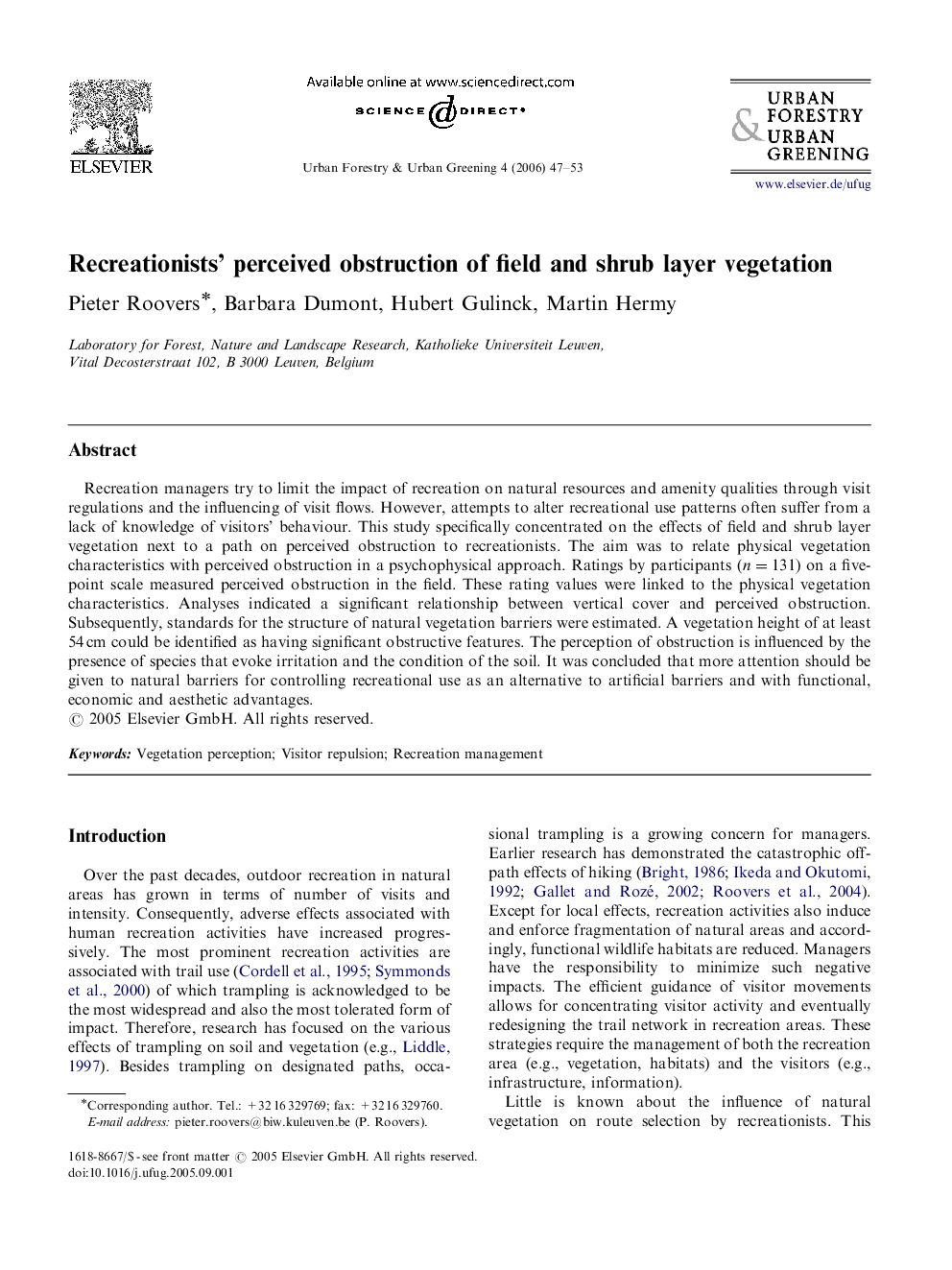| Article ID | Journal | Published Year | Pages | File Type |
|---|---|---|---|---|
| 94265 | Urban Forestry & Urban Greening | 2006 | 7 Pages |
Recreation managers try to limit the impact of recreation on natural resources and amenity qualities through visit regulations and the influencing of visit flows. However, attempts to alter recreational use patterns often suffer from a lack of knowledge of visitors’ behaviour. This study specifically concentrated on the effects of field and shrub layer vegetation next to a path on perceived obstruction to recreationists. The aim was to relate physical vegetation characteristics with perceived obstruction in a psychophysical approach. Ratings by participants (n=131n=131) on a five-point scale measured perceived obstruction in the field. These rating values were linked to the physical vegetation characteristics. Analyses indicated a significant relationship between vertical cover and perceived obstruction. Subsequently, standards for the structure of natural vegetation barriers were estimated. A vegetation height of at least 54 cm could be identified as having significant obstructive features. The perception of obstruction is influenced by the presence of species that evoke irritation and the condition of the soil. It was concluded that more attention should be given to natural barriers for controlling recreational use as an alternative to artificial barriers and with functional, economic and aesthetic advantages.
